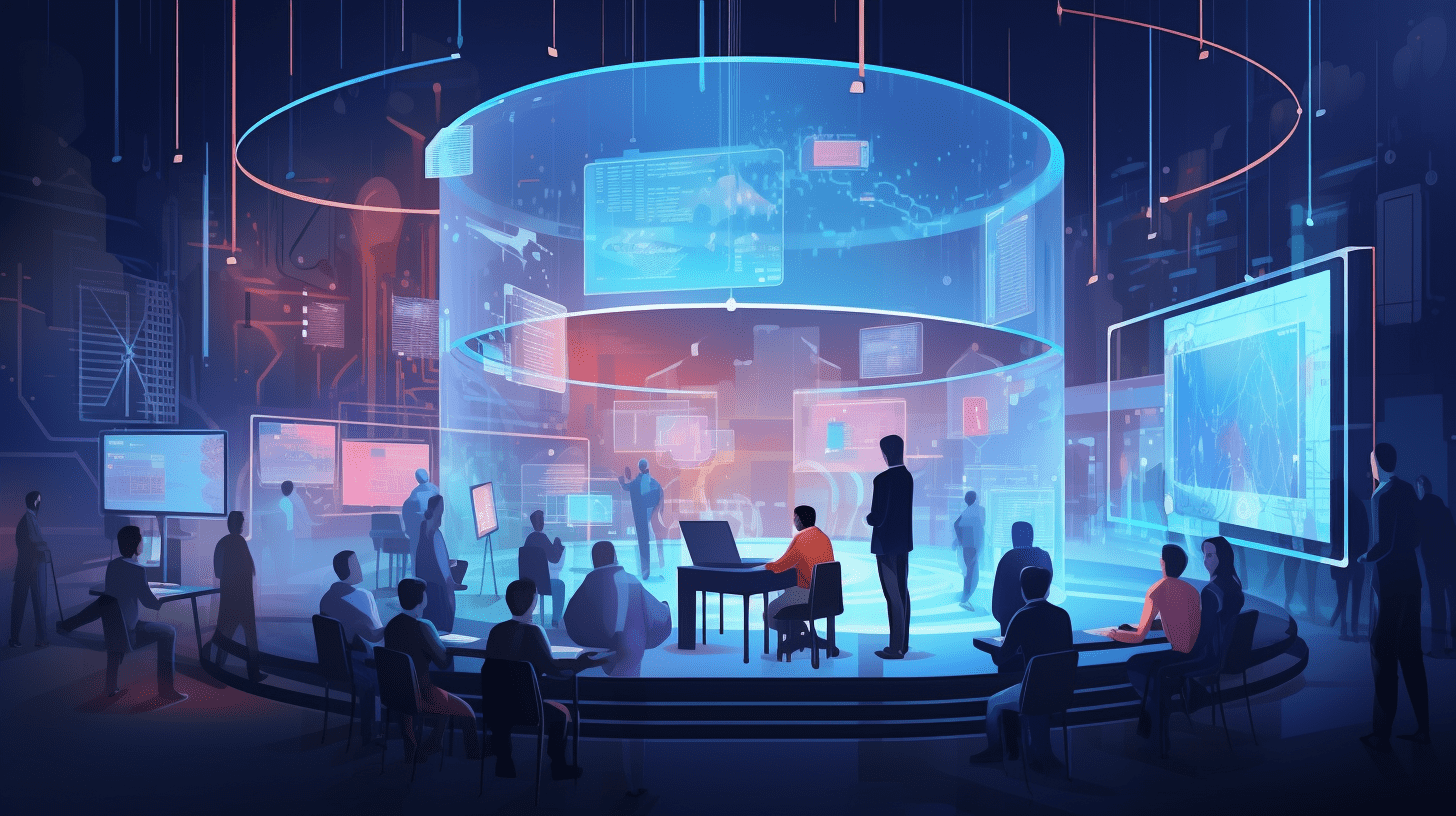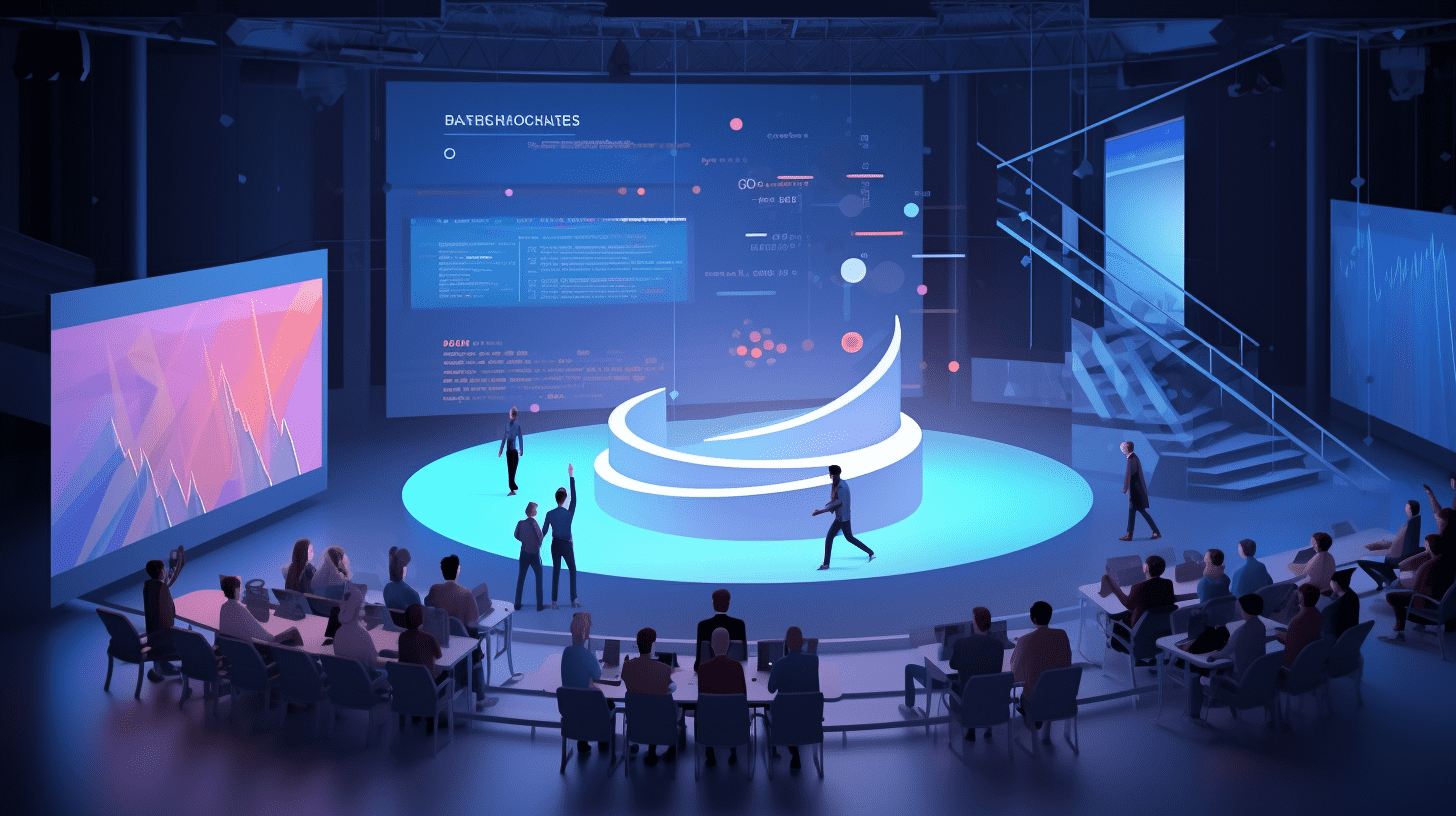Adobe (ADBE.US) sparks "AI + creative software storm"! AI-driven performance and outlook exceed expectations.
Sales guidance exceeded expectations but could not completely dispel AI skepticism: Adobe's performance is a touchstone for the competition between leading creative software companies and emerging AI forces.
Technology giant Adobe (ADBE.US), which provides popular creative software products such as Photoshop and Illustrator, has announced its latest quarterly performance data and sales outlook for the current quarter, both of which are above the average expectations of Wall Street analysts. However, judging from the post-announcement stock price trend, investors still remain skeptical about whether this leading company in the software industry that has sparked the "AI + creative software" storm can completely dominate the market share of emerging companies focused on artificial intelligence applications, such as OpenAI Sora and Runway.
In the earnings statement released after the US stock market closed on Thursday, the company stated that it expects overall sales for the third quarter of fiscal year 2025 ending in August to reach between $5.88 billion and $5.93 billion, surpassing the average Wall Street analyst expectation of approximately $5.88 billion; in terms of profit expectations, the profit excluding certain items under Non-GAAP guidelines is projected to be between $5.15 and $5.20 per share, compared to the average analyst expectation of $5.11 per share.
Investors are now discussing whether AI application software like OpenAI's Sora will disrupt the performance and fundamentals of traditional software giants. The company's quarterly performance signifies a "report card" on AI tools competition every three months. Design applications like Canva and image generation tools provided by Midjourney are rapidly gaining popularity, while Adobe is embedding generative AI features based on its proprietary AI large models into all of its flagship creative software products such as Photoshop, Premiere, and Illustrator, creating a new "AI suite" model for Adobe's creative software solutions.
In February of this year, Adobe even launched a separate subscription service for "AI + creative software" based on an AI video generator (similar to OpenAI Sora and other competitors in text-based video generation) in an attempt to compete with OpenAI, Runway, and others.
"To some extent, the market still inexplicably considers Adobe a loser under the pressure of AI." Analyst Gil Luria from DA Davidson said in a media interview. "But we believe this is a misunderstanding of the technology."
The "AI suite" has become the core engine driving the growth of Adobe's creative software sales
In recent years, Adobe has made significant progress in the field of generative AI, launching multiple widely influential application products and integrating AI large models into its flagship software. For example, in the flagship software product Photoshop, Adobe introduced the Generative Fill feature supported by the Firefly series generative AI large model, allowing users to generate and edit image content through simple text prompts.
Statistics show that Adobe's "AI suite" - the Adobe proprietary AI large model family Firefly AI series, has been used over 24 billion times to generate over 24 billion units of AI content. Dan Deen, Adobe's Chief Financial Officer, stated in the earnings call following the results announcement that this number was a significant increase from the 20 billion recorded in March. At that time, Adobe estimated that all of its creative software subscription products embedded with the AI large model family would generate at least an additional $250 million in annual recurring revenue.
Adobe's stock price surged over 6% in after-hours trading, but then quickly fell, ending up declining over 1% by the time of writing. The company's stock price at the close of trading on Thursday in the Eastern United States was $413.68. So far this year, the company's stock price has fallen by about 7%, significantly underperforming the over 2% increase in the S&P 500 index, reflecting investors' anxiety and doubt regarding artificial intelligence, especially the doubt on whether Adobe's creative software suite embedded with AI large models can defeat competitors like Sora.
However, it is undeniable that Adobe's "AI suite" has become the core engine driving the growth of Adobe's creative software sales. According to financial data, Adobe's overall sales for the second quarter of fiscal year 2025 achieved a year-on-year increase of 11% to $5.87 billion, exceeding the average expectations of Wall Street analysts of $5 billion. The profit per share excluding certain items was $5.06, also surpassing the analysts' estimated $4.98.
The digital media business division which includes core creative solutions and document processing saw an 11% year-on-year increase in sales revenue to $4.35 billion. The department's estimated annual recurring revenue is approximately $18.1 billion, in line with Wall Street's expectations, with a 12.1% year-on-year growth. The business department including marketing and analytics software also achieved a 10% year-on-year growth in sales, reaching $1.46 billion, matching Wall Street's expectations.
"Adobe's innovative model of AI + creative software is changing the creative software industry, empowering individuals and businesses to achieve unprecedented creativity." CEO Shantanu Narayen stated in the earnings announcement.
It is worth noting that Adobe has launched its own Firefly Video Model and "Text-to-Video" feature, which can generate short videos from a few seconds to more than ten seconds on the Adobe Firefly website, and has begun testing embedding this model in Premiere Pro, the newly added Generative Extend in Adobe Photoshop, and the "Content-Aware Fill" in After Effects.Critical Adobe Creative Software Workflow.However, the current positioning of Firefly Video Model is in short film and creative clip production, and has not yet achieved the complex narrative effects of Sora level long-term. For long-term users of Adobe Premiere Pro, Adobe's Firefly Video model has been launched online and embedded in Premiere Pro, significantly improving video editing efficiency. Compared to Sora, Adobe postpones post-editing work and other productivity effects and copyright compliance, while Sora focuses on pushing the limits of "long shot scenes".
Compared to professional long films and high dynamic scene super high-quality video AI models like OpenAI Sora, Firefly Video Model currently focuses on material clips, B-roll and social media short videos, and is limited by resolution and duration; however, Adobe emphasizes that its AI model is trained on authorized or proprietary materials, making it easy for commercial compliance usage, and can directly perform secondary edits with Adobe's copyright-effect in its Creative Cloud ecosystem.
In comparison to GPT-40-based real-time video generation, Studio Ghibli-style image models, and other AI generated image competitors, Adobe uses Firefly Image 3 embedded in Photoshop to generate filling and Adobe Express for one-click image editing, as well as Generative Vector / Audio functions to compete comprehensively. Overall, Adobe does not respond to every "cutting-edge AI technology" with a equivalent Adobe original AI model, but tends to embed controllable and compliant generative capabilities in its complete suite of applications, supported by Sensei's traditional machine learning algorithms, forming an end-to-end workflow.
The wave of AI applications is sweeping the globe, and Adobe wants to get a piece of the pie.
Since the emergence of the DeepSeek-R1 open-source AI model, which combines the core attributes of "low cost" and "high performance", it has shocked Silicon Valley and Wall Street, causing a wave of deployment or local access of heavyweight AI models such as DeepSeek, Claude, and LIama, leading the global "AI application wave". In the financial market, investors have rushed to software stocks this year, betting on software companies to have performance data several times stronger than the current under the AI boom, and those companies with strong performance growth are expected to replicate the epic 1000% surge in stock prices like the "NVIDIA Corporation-style rally" since October 2022.
In the context of the global explosion of generative AI, Adobe is actively occupying market share with its "copyright compliance + workflow integration" strategy, intending to compete head-on with AI newcomers such as Sora and Runway in the new arena of AI application software. Adobe has significantly increased its investment in generative AI in the past two years, such as launching the Firefly series multimodal models and rapidly embedding them in core creative software like Photoshop, Premiere Pro, Illustrator; and releasing heavyweight applications like Firefly Video Model and Generative Extend, directly competing with OpenAI Sora, Runway Gen, and other AI newcomers.
Looking ahead to the trend of AI applications, with the new paradigm of "extremely low-cost AI training/inference" led by DeepSeek, significantly simplifying AI model training to deployment of all AI workloads-The training cost of AI has greatly decreased, and the token cost at the inference end has plummeted. In the future, killer generative AI applications covering various industries on the B-side or C-side, as well as the high probability of a significant increase in human social productivity with the "AI agent", is likely to show a explosive trend, which is also why global funds have recently poured into software stocks.
Strong performance data and forward-looking performance guidance are also the core logic for the recent surge in software stocks. Benefiting from the accelerating expansion trend of demand for artificial intelligence application software, enterprise AI application software provider C3.ai (AI.US), as well as AI advertising marketing service provider APPlovin (APP.US), and the leader in "AI + data analysis" Palantir (PLTR.US) have all recently announced strong performance data and future performance outlook. This means that not only the demand for AI computing infrastructure represented by NVIDIA Corporation's AI GPU is incredibly strong, but also AI software application side, especially the need for enterprise AI application software that can comprehensively improve operational efficiency, is also strong, and is rapidly penetrating into various industries.
The latest corporate survey data from Bank of America Corp shows that AI software-related AI software expenditure ranks as the "top priority" in almost all corporate budget spending budgets. Bank of America Corp's mid-year survey in 2025 shows that respondents expect AI-related expenditures in 2025 to account for 27.7% of their software budget, a significant increase compared to the end of 2024; this ratio is expected to be even higher in 2026, reaching 31.6%, significantly higher than the 2025 forecast.
Related Articles

GF SEC: How should global barbell strategies respond to the risk of a US recession? - New asset allocation strategies in the debt cycle series.

CICC Strategy Team: Who is buying Hong Kong stocks in new consumption and innovative pharmaceuticals?

EB SECURITIES: North American AI computing power leads the technology sector with storage prices continuing to rise, helping to boost the basic fundamentals of Hong Kong semiconductor stocks.
GF SEC: How should global barbell strategies respond to the risk of a US recession? - New asset allocation strategies in the debt cycle series.

CICC Strategy Team: Who is buying Hong Kong stocks in new consumption and innovative pharmaceuticals?

EB SECURITIES: North American AI computing power leads the technology sector with storage prices continuing to rise, helping to boost the basic fundamentals of Hong Kong semiconductor stocks.






